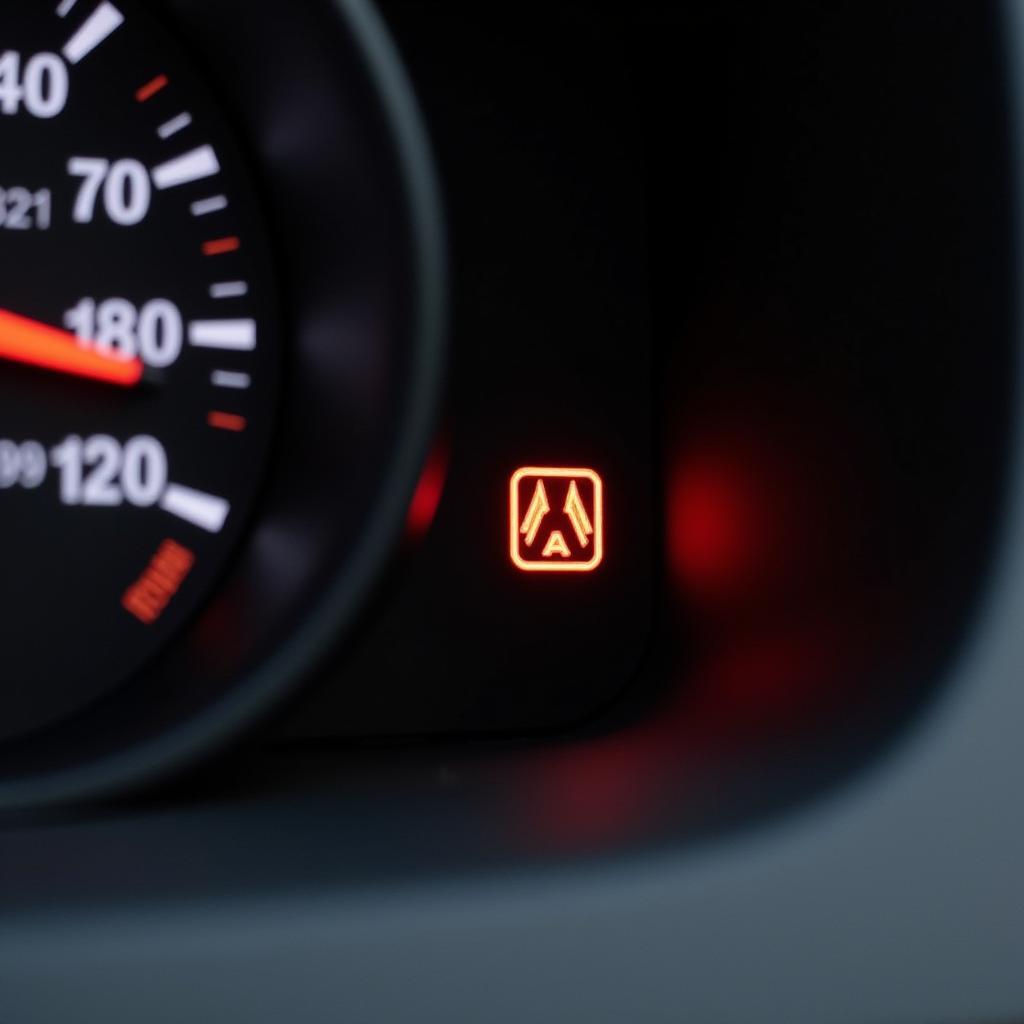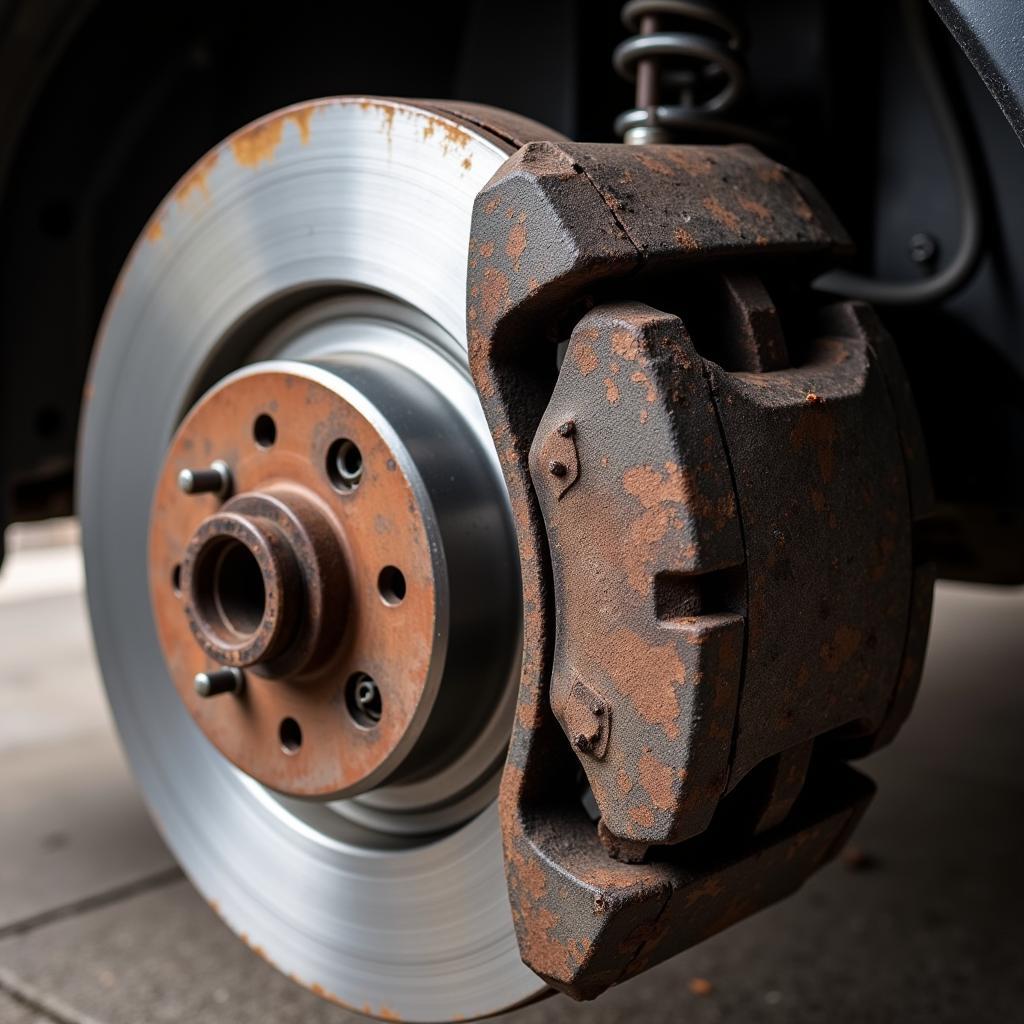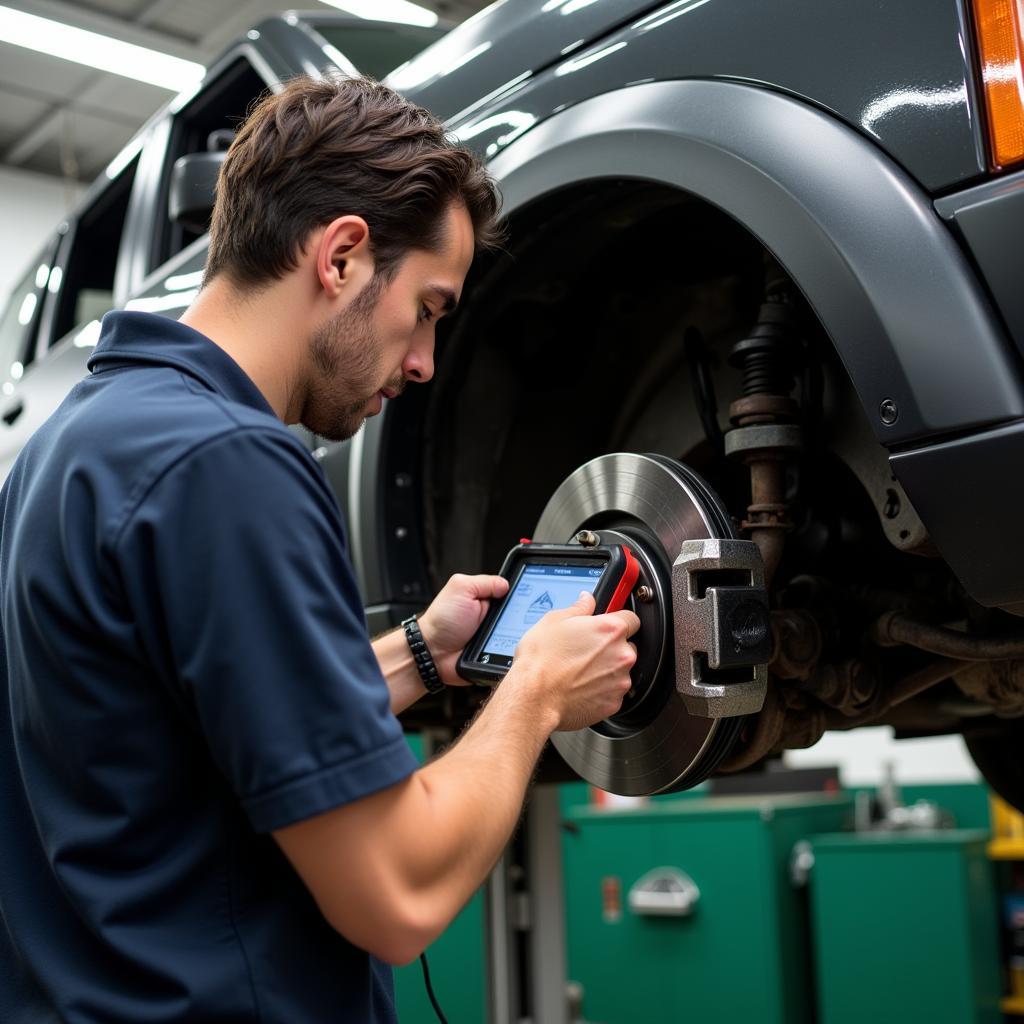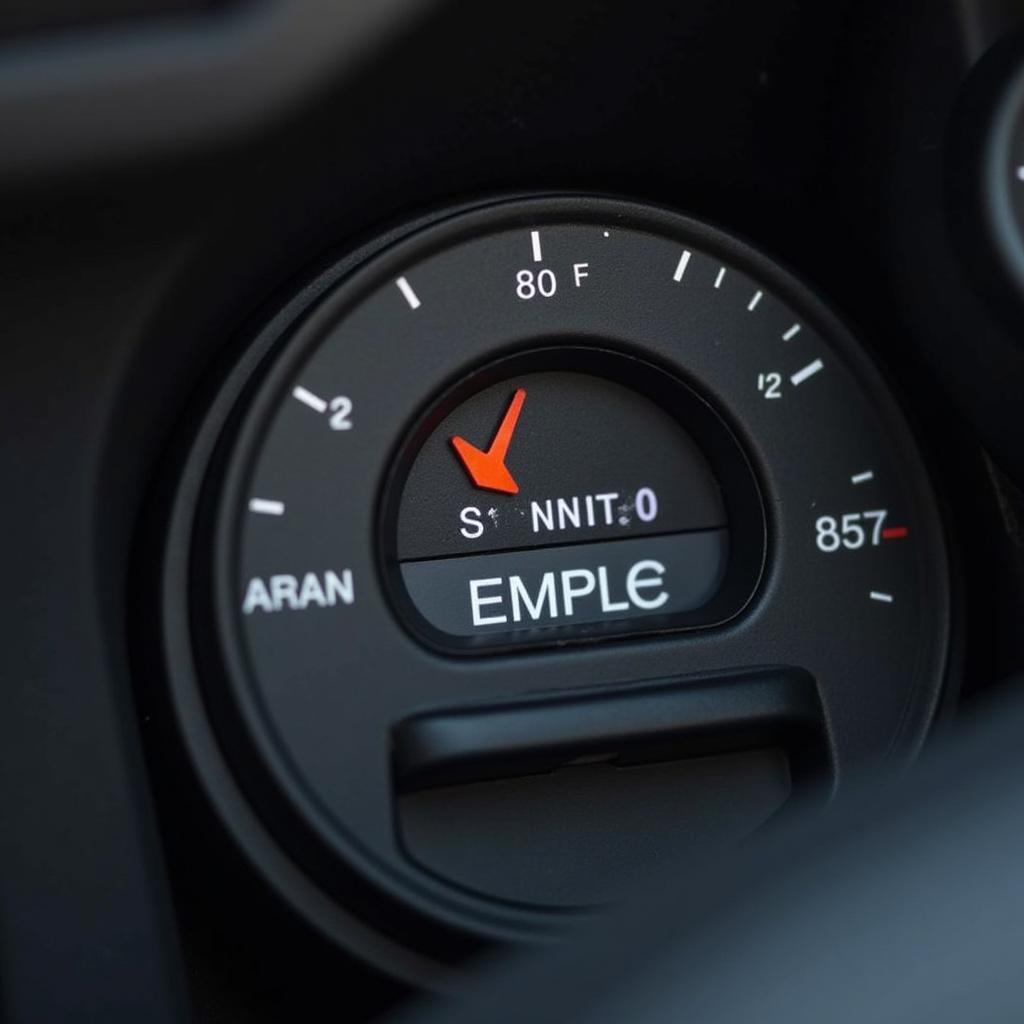The dreaded “brake pad warning” light flashing on your dashboard can be a heart-stopping moment, especially in a vehicle as capable as the Discovery 3. However, don’t panic! This warning doesn’t necessarily signal a catastrophic failure. This article will guide you through understanding the Discovery 3 brake pad warning, its common causes, and how to approach a solution.
Understanding the Warning
The “brake pad warning” light on your Discovery 3 is your vehicle’s way of telling you that the brake pads are wearing thin and require attention. Ignoring this warning can lead to more serious and expensive repairs down the line.
 Discovery 3 brake pad warning light on dashboard
Discovery 3 brake pad warning light on dashboard
Common Causes of a Discovery 3 Brake Pad Warning
- Worn Brake Pads: This is the most common cause. Brake pads are designed to wear down over time, and the warning light is triggered when they reach a certain minimum thickness.
- Worn Brake Pad Sensors: Most Discovery 3 models are equipped with brake pad wear sensors, which are small metal tabs that make contact with the brake rotor when the pads are worn. This contact completes a circuit, triggering the warning light.
- Faulty Sensor or Wiring: While less common, a malfunctioning sensor or damaged wiring can also trigger the warning light even if your brake pads are in good condition.
- Low Brake Fluid: In some cases, low brake fluid levels can trigger the brake pad warning light. This is because the system sees a drop in pressure which can be associated with worn pads.
What to Do When the Warning Light Appears
- Check Your Brake Fluid Level: Ensure the brake fluid reservoir is topped up to the appropriate level. If it’s low, this could be a sign of a leak or worn brake pads, and you should have your system inspected by a professional.
- Inspect Your Brake Pads: If you’re comfortable with basic car maintenance, you can visually inspect your brake pads for wear. If they look thin or you see metal-on-metal contact, it’s time for a replacement.
- Seek Professional Diagnosis: For a definitive diagnosis and repair, it’s always best to consult a qualified mechanic, especially one familiar with Land Rover vehicles. They can accurately assess the condition of your brake pads, sensors, and wiring, and perform the necessary repairs.
 Worn brake pads on a Land Rover Discovery 3
Worn brake pads on a Land Rover Discovery 3
Remote Diagnostics and Software Solutions
Advancements in automotive technology have paved the way for remote diagnostics and software solutions. In some instances, a qualified technician can remotely access your Discovery 3’s onboard computer to diagnose the cause of the brake pad warning. This can be particularly helpful in determining if the issue stems from a faulty sensor or wiring before proceeding with a physical inspection.
Importance of Timely Maintenance
“Regular brake system maintenance is crucial for ensuring optimal performance and, most importantly, your safety,” says Mark Stevenson, a senior Land Rover technician with over 20 years of experience. “Addressing the brake pad warning light promptly can prevent more serious issues and costly repairs in the long run.”
 Mechanic diagnosing brake issue on a Land Rover
Mechanic diagnosing brake issue on a Land Rover
Preventing Future Brake Pad Warnings
- Adhere to Manufacturer’s Service Intervals: Land Rover provides recommended service intervals for brake pad inspections and replacements in your owner’s manual. Following these guidelines can help prevent premature wear and unexpected warning lights.
- Driving Habits: Aggressive driving, with frequent hard braking, can accelerate brake pad wear. Adopting smoother driving techniques can extend the life of your brake pads.
- Quality Parts: When it’s time for a replacement, opt for high-quality brake pads designed for your Discovery 3.
Conclusion
The “discovery 3 brake pad warning” light is a valuable safety feature, alerting you to a potential issue with your braking system. While it can be unsettling, understanding the potential causes and taking prompt action can save you from more significant headaches down the road. Remember, regular maintenance and timely attention to warning signs are key to keeping your Discovery 3 performing at its best and ensuring a safe driving experience.
For more information on specific Land Rover models, you can check out these resources:
- Land Rover Discovery 3 Brake Pad Warning Light Reset
- Land Rover Discovery Sport Brake Pad Warning Light
- Discovery Sport Brake Pads Worn Warning
- Land Rover Discovery 4 Brake Pad Warning Light
FAQs about Discovery 3 Brake Pad Warnings
- Can I drive with the brake pad warning light on? It’s not recommended. Driving with worn brake pads can reduce braking efficiency and lead to more extensive damage.
- How much does it cost to replace brake pads on a Discovery 3? The cost varies depending on factors like labor rates and the type of brake pads used. It’s best to consult a mechanic for an accurate estimate.
- How often should I replace my Discovery 3’s brake pads? There’s no one-size-fits-all answer as driving habits significantly impact brake pad lifespan. Refer to your owner’s manual for recommended service intervals and consult a mechanic for personalized advice.
- Can I replace my Discovery 3 brake pads myself? If you have mechanical experience, it’s possible. However, it’s generally recommended to have this procedure performed by a qualified mechanic to ensure proper installation.
- What happens if I ignore the brake pad warning light for too long? Ignoring the warning can lead to severe brake damage, including damage to the rotors, calipers, and potentially brake failure, leading to hazardous driving conditions.

